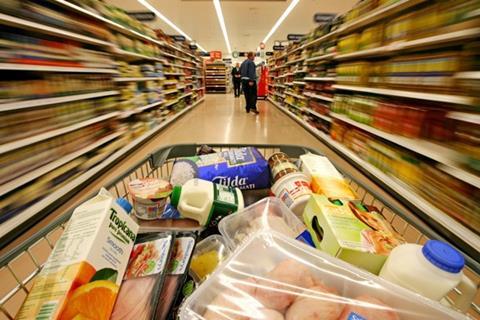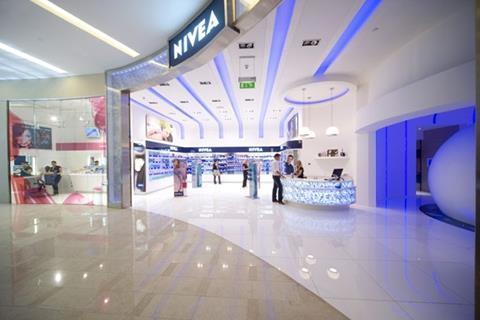Retailers are increasingly in favour of decluttering stores, so what’s the future for in-store marketing?
In the region of £1.5bn is spent on in-store marketing in the UK and Ireland each year. It’s a staggering sum, but some argue that brand promotions at the shelf have had their day.
Asda has been open about its policy of decluttering its stores; and it’s also not the only retailer to be favouring own-label products more within its rationalised ranges. FMCGs express frustration at finding it harder to get their promotions into stores, and at the same time are turning to alternative routes to market for their brand messaging and education, such as the internet.
Meanwhile, retailers are increasingly tailoring and personalising promotions, and using customer data captured from loyalty schemes and online sales to target particular shoppers with offers.
So has the traditional big brand store promotion had its day, or will stores continue to be a major medium for this type of marketing message in the longer term?
A case of clarity
Shopper marketing agency Saatchi & Saatchi X chief executive Simon Hathaway says that the changes retailers are making in their stores should be thought of as “not about clutter to clear, but clutter to clarity”.
He says retailers are becoming strong marketers and they know what is good and useful. “A lot of what was going into stores was cardboard rubbish,” he explains. “Communication in-store has a really clear role to play; but some retailers are right to move to a clear store policy if it doesn’t bring any value to the retailer or the in-store experience.”
Guy Vaughan, director of research at trade body Point of Purchase Advertising International (POPAI), agrees: “Retailers are being more controlled about what they put on the shopfloor.” He adds that this has been a growing trend in the past six months, but he says that it is a question for each individual retailer as to what constitutes too much.
Sainsbury’s customer insight director Andrew Mann says the grocer has found that its customers most value a mixture of lots of different promotional types including in-store, as well as more targeted offers.
“The one way not to be heard is to shout louder,” Mann says, adding that fewer, more relevant and bigger offers are what customers have demonstrated that they want.
He admits that the majority of offers will still be delivered in-store, but says that Sainsbury’s is growing its other channels such as coupons at the till and email offers.
Unlike other retailers that only send targeted offers via direct mail or email, Sainsbury’s also gives members of the Nectar loyalty scheme targeted offers at the tills using a colour coupon system from Catalina Marketing. This system is also used to generate the coupons it gives out for its “Buy one get one free next time” offers.
Mann says that this has been done in response to customers, who said that they wanted relevant offers that make their shopping better value.
Overcoming barriers
Asda is going back to its roots with its in-store experience according to The Marketing Store planning and strategy director Wendy Lanchin. The Marketing Store works on promotional campaigns for many major brands, and Lanchin highlights Asda particularly as a retailer demanding that point-of-sale promotions are innovative. She says that this harks back to the Asda of old, whose stores were famous for their egg displays with chickens that clucked and milk displays with cows that mooed.
Navigation, education and inspiration are the three factors retailers need to consider for their messaging in-store. Hathaway says that traditionally in-store marketing communicated reasons to buy products, now it is all about overcoming barriers to purchase.
He gives the example of Sainsbury’s “Love your leftovers” campaign to highlight marketing that is designed to overcome a barrier to purchase. He recently saw a free-standing unit in a Sainsbury’s store - designed to look like a fridge - being used to give away free plastic boxes to store leftovers in. Mann says Sainsbury’s gave away a total of 2 million of the boxes to customers.
Lanchin warns retailers that cutting back drastically on brand marketing, and favouring private label in their stores can result in missing out on what the big brands can give back, in terms of navigation within a category and innovation. “There is much more demand for innovative and even interactive point of sale. It is much more about dwell time and interaction with the category, not just brands,” she says.
Recent campaigns she has worked on include one for Persil, where the point-of-sale marketing material allowed customers to smell what Persil’s new fragrances were like. Lanchin expects this experiential-type of in-store marketing to catch on more and says as well as being good for FMCG brands to differentiate their products it is “also what the retailer needs to put some joy back into shopping”.
Hathaway agrees that good campaigns will still be given shelf space. He points to the Pampers tie-up with Unicef, where it provides one vaccination for every pack of Pampers nappies sold. He says that not only have retailers been happy to promote this offer, but Tesco has gone one step further and matched Pampers’ vaccination donation for every pack purchased in its stores.
And Lanchin adds that this holds true for more than just grocery retail. The Marketing Store has also worked with Vodafone, which chose to put live iPhones in each of its stores rather than the dummy models most retailers use. Lanchin says that allowing customers to experience what using an iPhone is really like has allowed Vodafone to outsell competitor Orange.
The work Carphone Warehouse is doing with Sony and Sony Ericsson to showcase and demonstrate their whole wireless range is another example of this (see panel). This campaign incorporates both in-store, a microsite and further product demonstrations on YouTube.
Fitch Design Agency head of insights Mat Haywood says that the diversification in how FMCG brands interact with their customers is a natural evolution off the back of what it sees as oversaturation and the difficulty FMCGs have differentiating themselves within stores.
He points to the mainstream brands that have created pop-up stores in the past 18 months as evidence of FMCGs trying something different - such as Marmite’s Regent Street store - but says such PR runs its natural course.
However, he points to brand building work done by the owner of the Nivea brand as an example of a project with longevity, and one that can feed ideas back to mainstream retail. Three Nivea Haus stores have been created in Hamburg, Berlin and Dubai with a wellbeing cafe, spa and treatment rooms.
Haywood says: “What’s interesting here is that the stores also act as innovation hubs to test new fixtures and fittings, different lighting systems and new products in a real retail environment. This ability to test and trial is creating a positive feedback loop, which enables Nivea to reapply any lessons to the brand’s existing global retail channels and point-of-sale displays.”
Haywood adds that FMCGs that innovate in this way can also invite retailers into these sites and get their advice on how they can improve point of sale in the stores.
At the same time as more measurement is being done before brands approach retailers with their ideas, the two groups are also working together to track what is and isn’t working within stores over time.
Vaughan explains that POPAI is working with brands including GlaxoSmithKline, Unilever and Nestlé on an ongoing basis to measure the performance of their in-store displays, and work out which have a real effect. The organisation is also working on a measure that’s specific to the convenience sector, with retailers including the Co-op and Spar.
Mann concludes that the World Cup is likely to produce a whole wave of in-store promotional activity to tie-in with the event. Retailers that can tap into the excitement around this event, while working with brands that are prepared to be innovative and back their ideas up with customer insight, will find that customers appreciate their in-store marketing messages the most.
The facts Information UK shoppers want
The Coca-Cola Retailing Research Council Europe has worked with Deloitte on a study to understand what information shoppers actually want both outside the store and at the point of sale.
The research found that consumers want more information in categories where retailers or brand manufacturers are not a proactive arbiter of choice - such as fresh meat, fruit and vegetables. While shoppers look for the price of washing powder just as much as for the price of a cut of meat, they also look for indicators of product attributes with the meat as there is no brand to represent trust and quality. Retailers have traditionally focused on price, promotion and quality dimensions in the information they display at the point of sale. The research also shows shoppers are focused on nutrition, health, specific dietary needs and the environment. Information to assist shoppers when they are thinking about these issues can be broken down into product attributes - such as ingredients and origin - and product benefits, such as an organic or nutritional label.
When it comes to special offers, shoppers in the UK are much less likely to look at store special offer leaflets than consumers in other European countries.
The study highlights that, to a certain degree, individuals learn shopping behaviour dependent on local market practices, so there is an opportunity for retailers to make consumers more sensitive to different types of communication.
However, it concludes that given a general reluctance of shoppers to take in information, it’s crucial promotions and pricing are clear and there is strong compliance with a store’s promotional guidelines to avoid confusing shoppers.
Finally, it asserts that retailers and brands need to understand not only which promotions work within which categories, but which promotions work for which shopper groups if both are to maximise their return on investment.
An interactive campaign

Carphone Warehouse will have rolled out interactive demonstration displays of Sony Ericsson handsets and other Sony consumer devices to 120 of its stores by the end of this year.
The units are designed to demonstrate how different products in the Sony family can be used together and shoppers can visit an interactive microsite using a Sony laptop computer on the display for more in-depth information on how to connect the devices together.
The campaign is backed by videos on YouTube that also demonstrate how to get the most of the products on the display.





























No comments yet